Touch Assist
A Touch Assist can be used for aches, pains or discomfort in almost any part of the body. (A Touch Assist is not used for a headache.)
THEORY
A Touch Assist re-establishes communication with the body. It brings a person’s attention to the affected body areas. This is done by repetitively touching the person’s body and putting him into communication with the parts of the body that are affecting him. His increased communication with his body helps to ease his physical pain or discomfort.
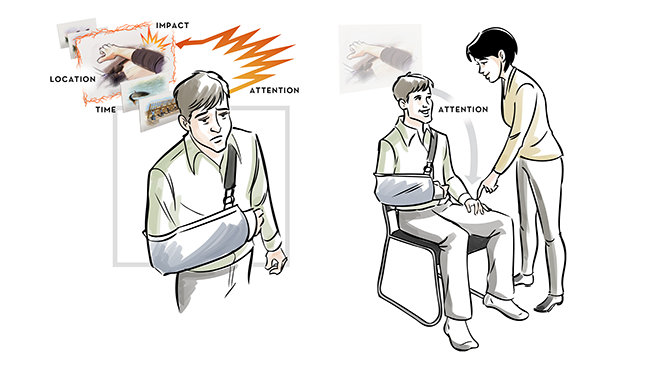
PROCEDURE
0. Give the person any first aid that may be needed before you begin the assist.
1. Have the person sit down or lie down—whatever position will be more comfortable for him.
2. Tell the person that you are going to be doing a Touch Assist and briefly explain the procedure. Tell him that you will be asking him, over and over, to “Feel my finger” and that he is to let you know each time he has done so:
“I am going to be asking you, over and over, to feel my finger. Each time, let me know you have done so.”
3. Give the command “Feel my finger,” then touch a point, using moderate finger pressure:
“Feel my finger.”
Do not touch and then give the command; that would be backward.
Touch with only one finger. If you use two fingers, the person could be confused about which he was supposed to feel.
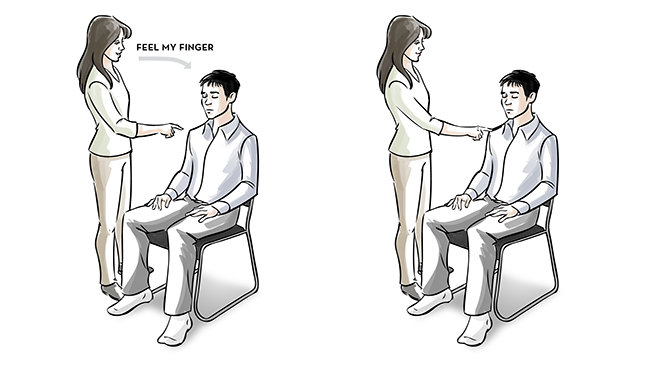
4. When the person indicates he has done the command, acknowledge him by saying “Thank you” or “Okay” or “Good.”
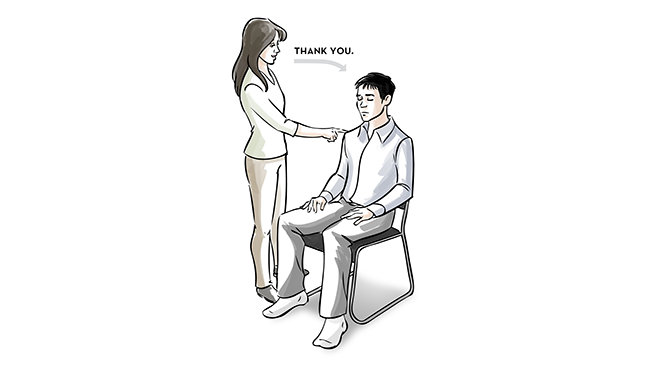
5. Give the next command, touching and acknowledging when the person indicates he has done the command.
When touching, avoid the genital areas or buttocks in both sexes and a woman’s breasts.
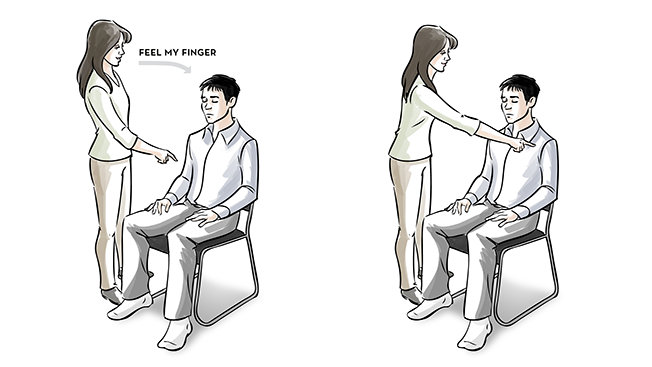
6. You always balance both the left and right sides of the body. When you have touched the person’s left side, you next touch his right side.
This is important because the brain and the body’s communication system interlock (lock together). You can find that a pain on the left side goes away when you touch the right side, because the right side is holding it in place.
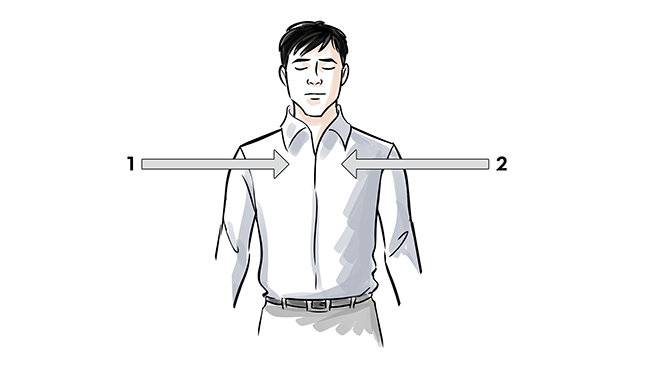
7. You continue to give the command, touching and acknowledging each time.
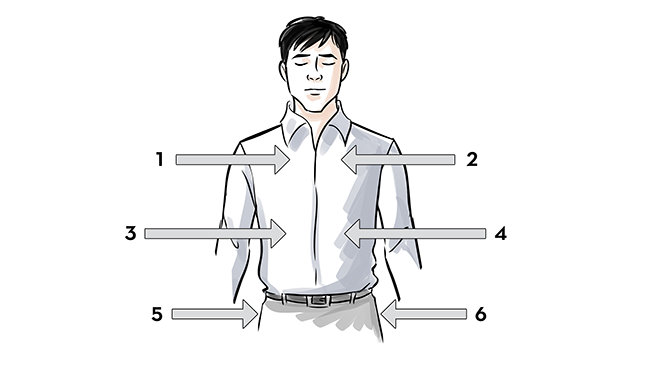
8. Be sure to include the arms, elbows, wrists and hands…
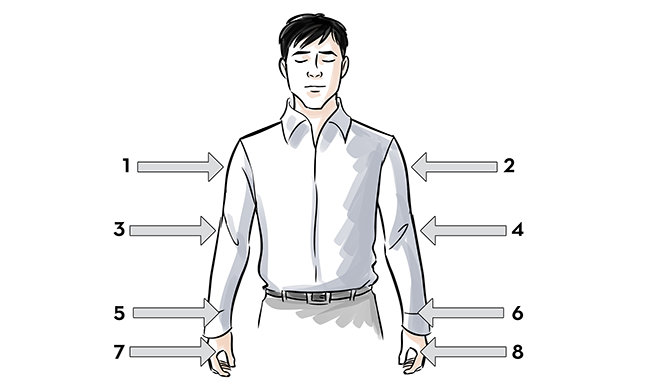
9. …and the fingertips.

10. Touch the toes, the feet, the knees and the legs.
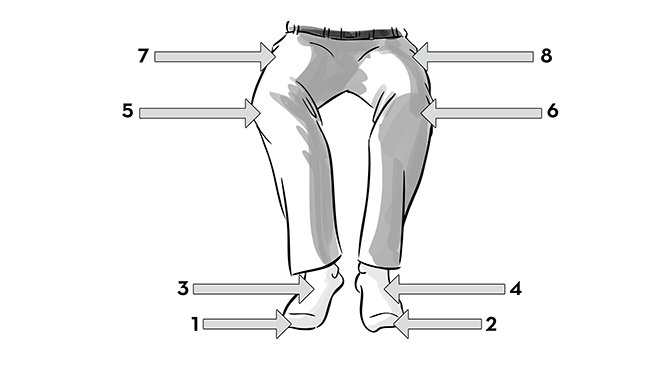
11. In addition to handling the left and right sides of the body, you must also address the back and front sides of the body. In other words, if you have given attention to the front of the body, you must also give attention to the back of the body.
This includes the left and right sides of the spine…

12. …and the backsides of the knees.
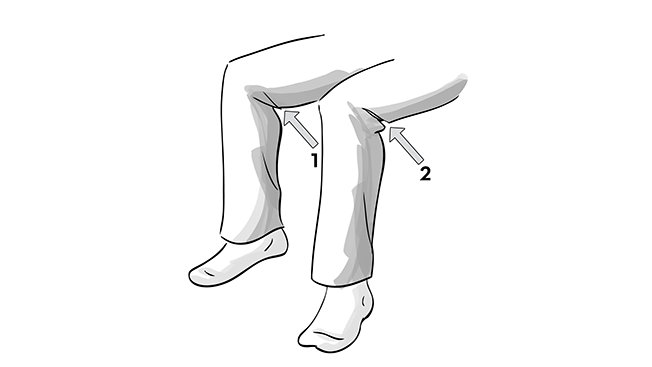
13. Continue the assist until the person has a realization or experiences some relief.
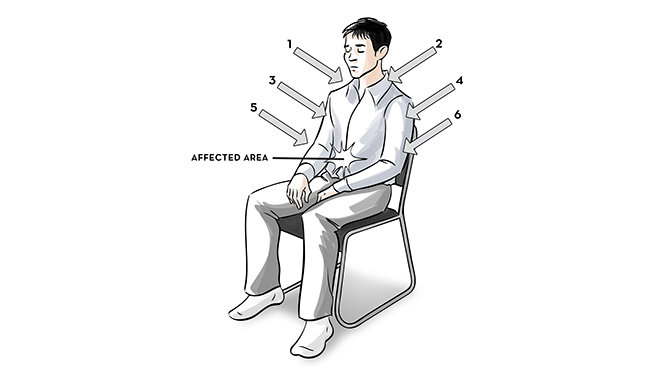
TOUCH ASSIST FOR A PARTICULAR PART OF THE BODY
If the person is having a specific difficulty or discomfort, you can give him a Touch Assist to address that particular part of the body.
1. As you touch, you approach the affected area.
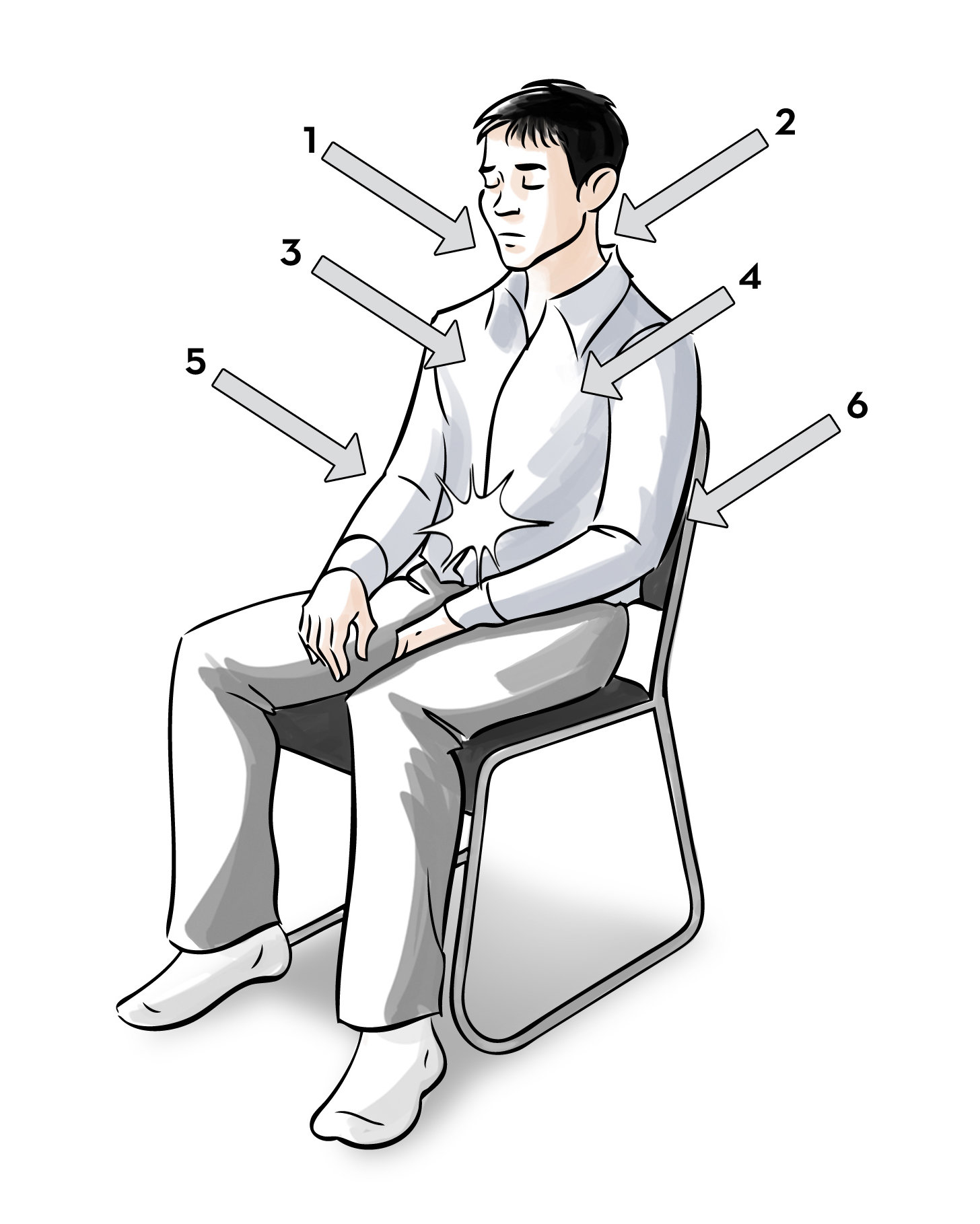
2. Then go away from the affected area. Then approach it again.
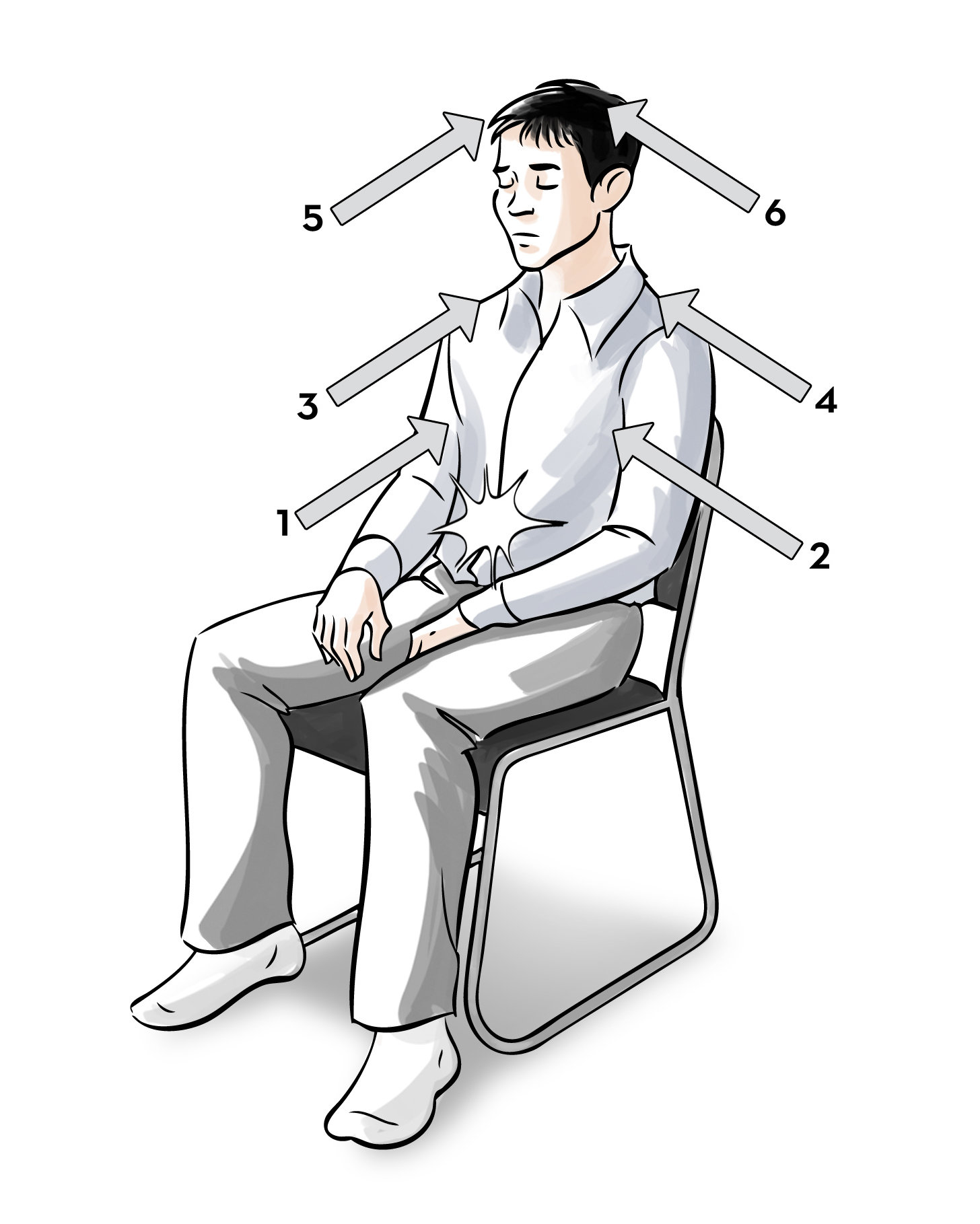

3. Go away from the affected area again. Then approach it closer.
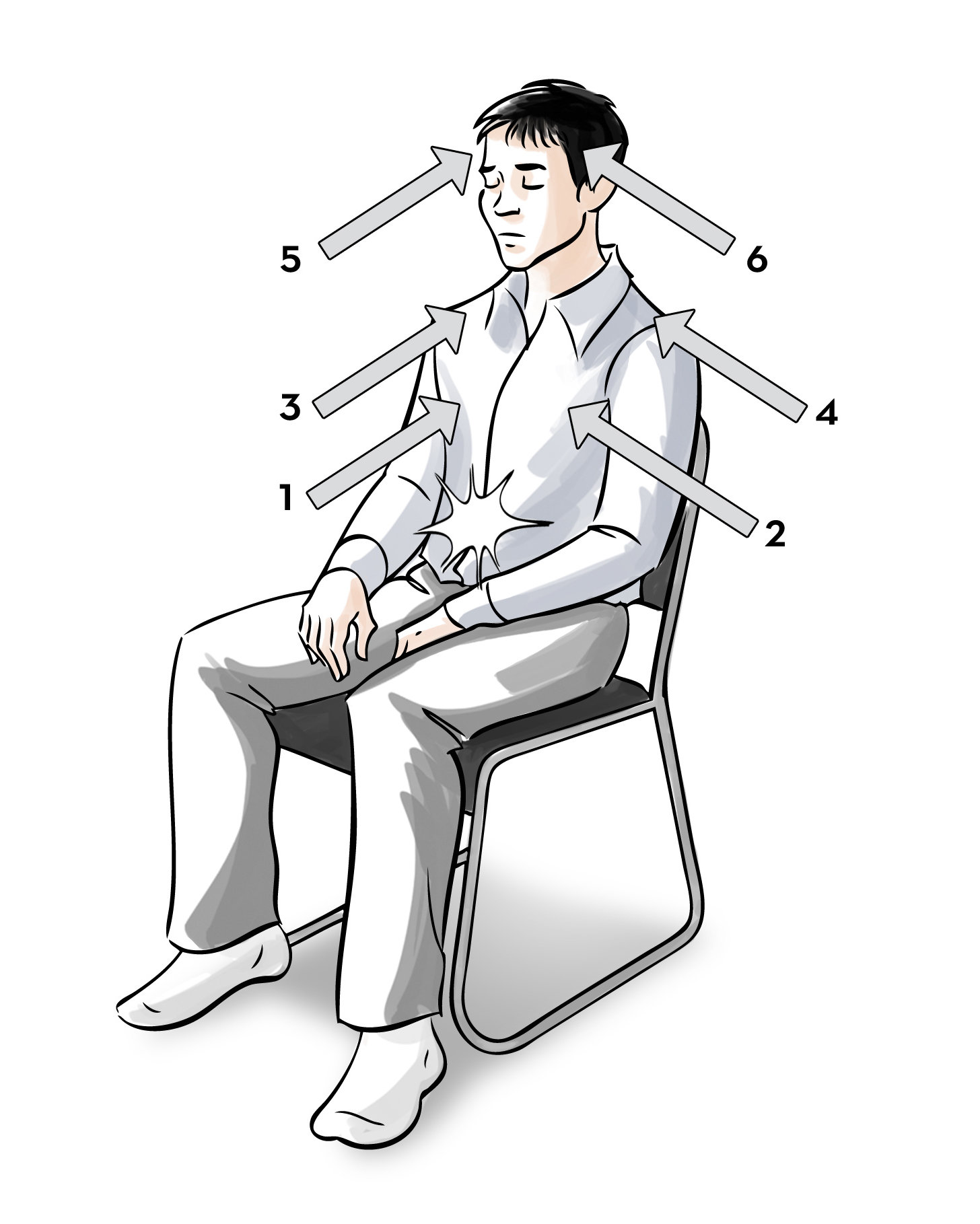

4. Then go away from the affected area further. Then approach it to a point where you are actually touching the affected area.
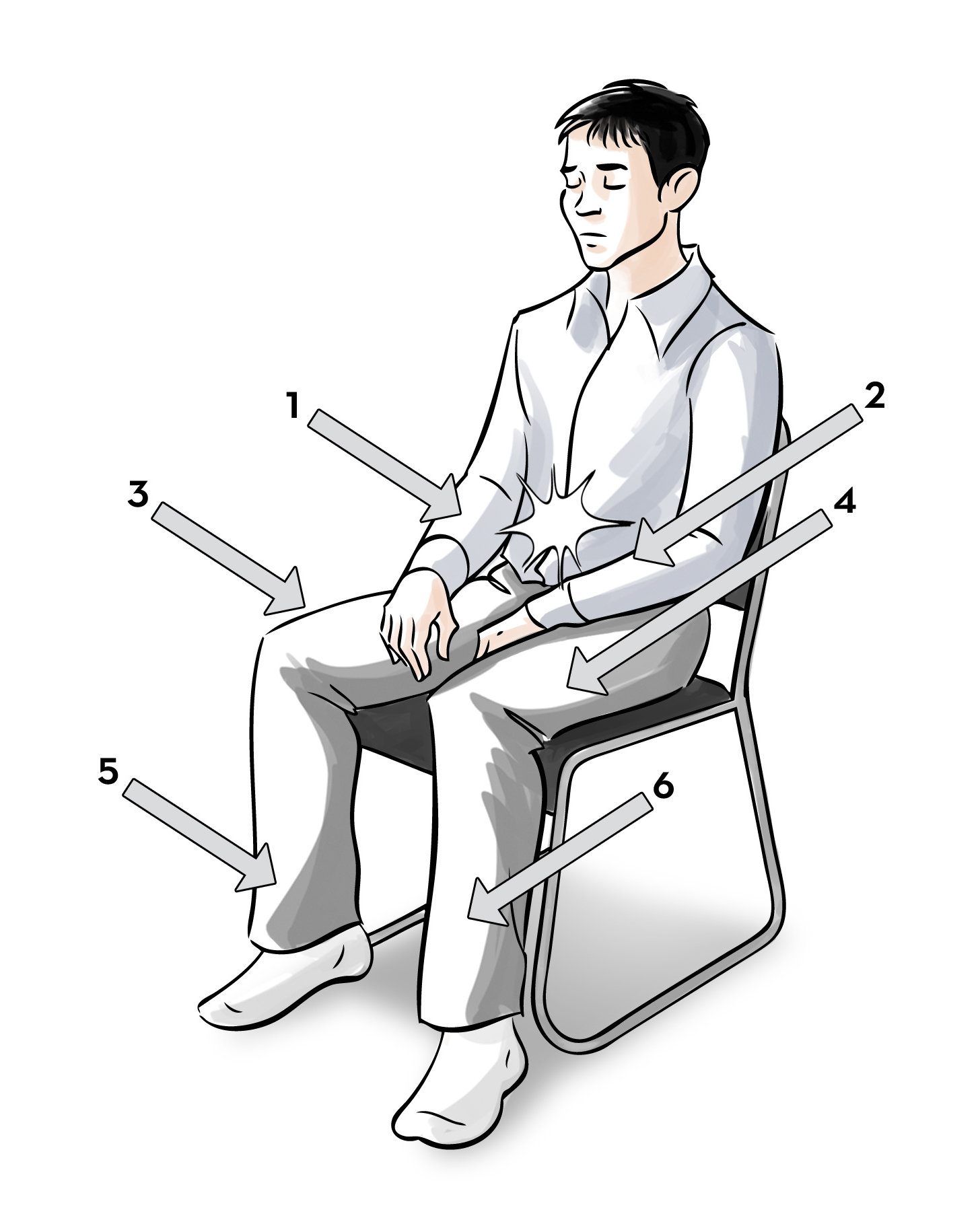

5. Once you have touched the affected area, go away from it further and continue the assist.
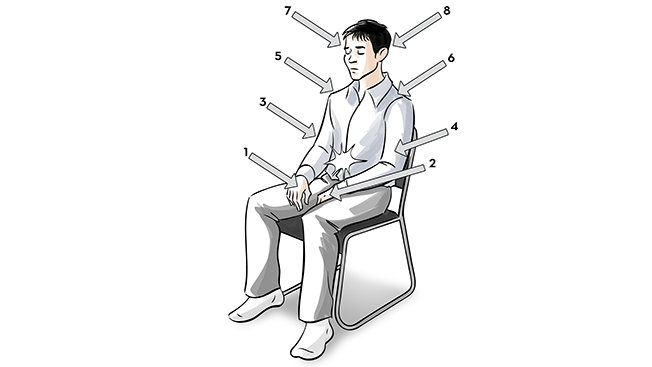
6. When addressing a particular body part, you also touch the back of the body part.

7. No matter what part of the body is being helped, the Touch Assist always also includes the hands and feet and the spine.
8. Continue the assist until the person has a realization or experiences some relief.
9. Tell the person:
“End of assist.”
You may have to give Touch Assists day after day to achieve a result. At first, you might get an awareness of the area where the illness or injury is. Giving another Touch Assist on the following day, you could expect a bit more improvement. It might take many more days than this, with a Touch Assist given each day, before a result is achieved. The point is that the number of Touch Assists you can do on the same thing is unlimited.
USES
Use on Injuries
Never do a Touch Assist as the first action on an injured person when you can do a Contact Assist. If the exact location where the injury occurred is available, do a Contact Assist. The Contact Assist can then be followed by a Touch Assist or any other assist action. If the exact location of the injury is not available, a Touch Assist is used.
Use on Unconscious Persons
Touch Assists can even be done on an unconscious person. You communicate with the person by gently taking his hand in yours and telling him:
“When you have felt my finger, squeeze your hand.”
The person will give you a small increase in pressure. Then go ahead with the Touch Assist, touching the knees, thighs, feet, head, ears and so forth. He’ll start understanding and following what to do after a while.
Use on Animals
Touch Assists can be used to good results on animals.
In doing a Touch Assist on a sick or injured dog or cat, you should wear thick gloves, as they may snap and scratch.
Use on Persons on Drugs
A Touch Assist can be done on a person who has been given painkillers or other drugs. This isn’t ideal, but it is sometimes necessary under emergency conditions.
Where a person has been injured, your objective should be to get to him and give him a Touch Assist before anyone gives him a painkiller. If the body has been very badly damaged, the person may still be in agony after your assist, but you will have gotten some of the shock off.
CAUTIONS
Headaches
Do not do a Touch Assist on a person who has a headache. Research has shown that headaches are almost always the result of something that happens mentally that a Touch Assist would be the incorrect handling for.
Head Injuries
If a person has received an actual injury to the head, such as being poked in the eye or hit on the head with a stick, he can be given a Touch Assist. The same applies to injuries to the teeth or painful dental work.
SUMMARY
The Touch Assist is easy to learn and can be quite remarkable in its results. It has the advantage of being easy to teach others. So use it well to help those around you, and teach them to help others as well.

